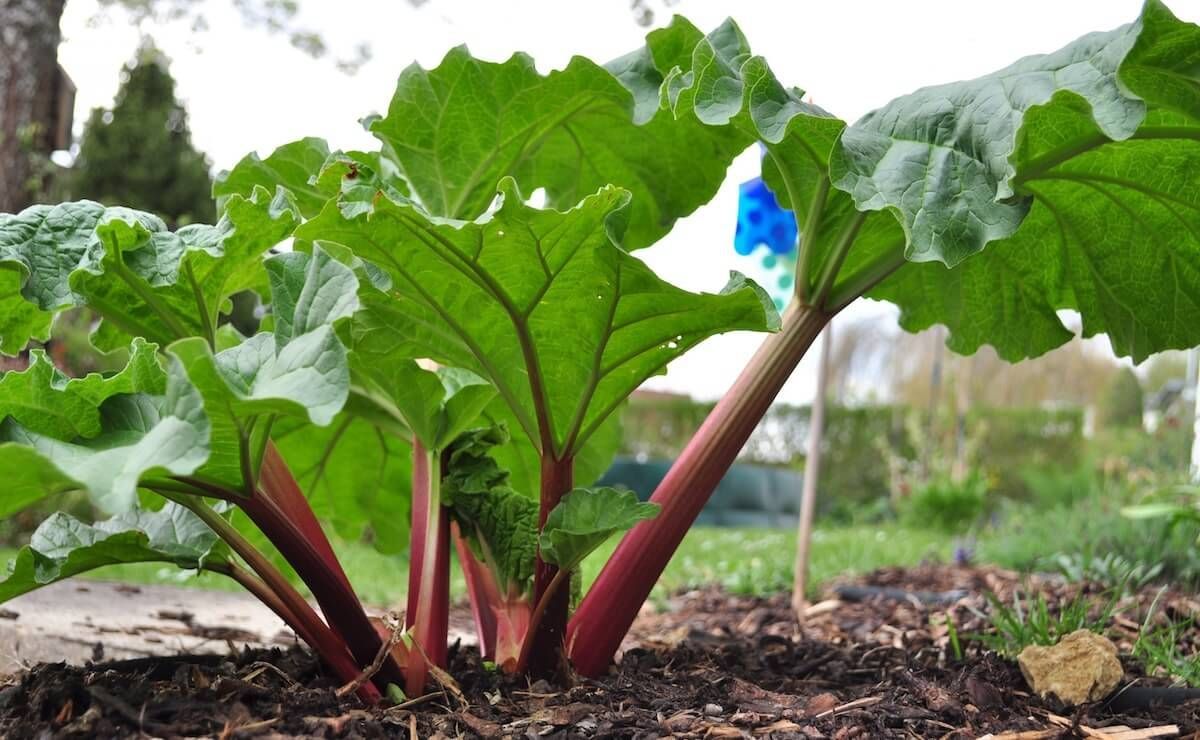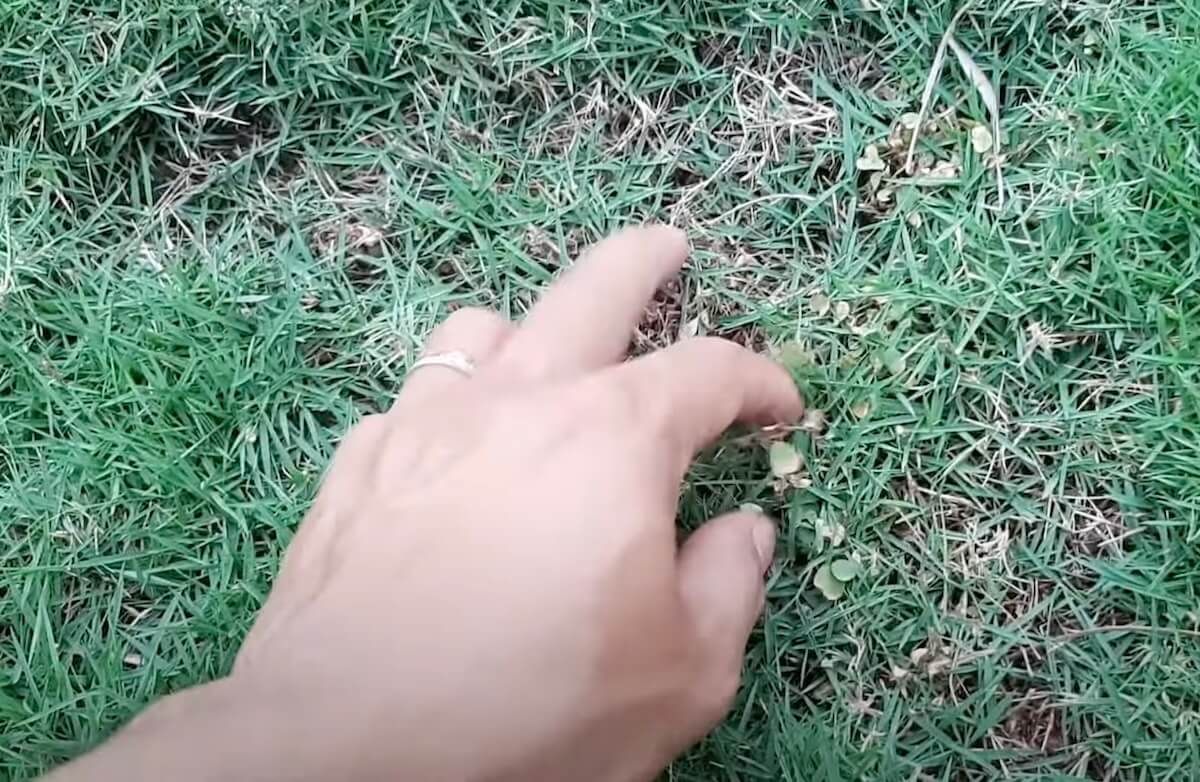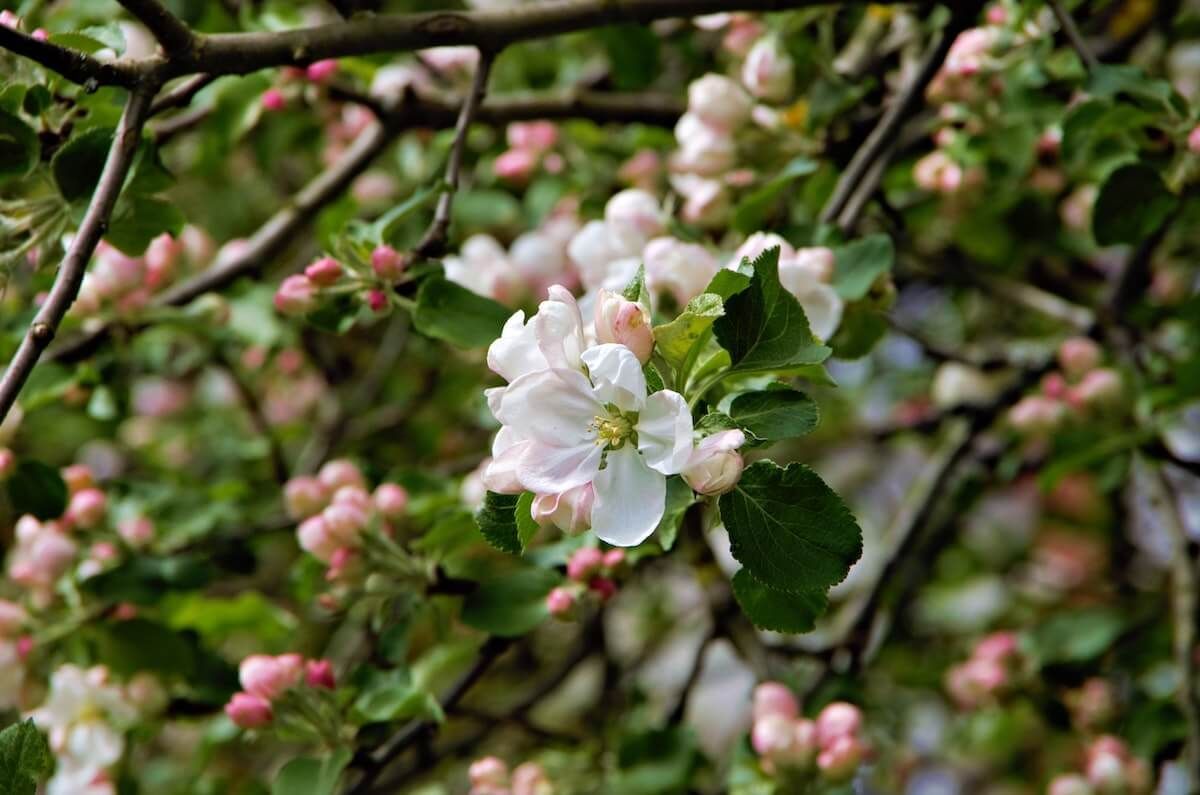The Growing Guide, and Harvesting Rhubarb

An early spring treat!
You'll be happy to discover rhubarb is a hardy and problem-free perennial. You plant a few roots (or crowns) and then every spring thereafter you can treat your family to one of spring's most refreshing tastes.
And in the kitchen, you'll like rhubarb's tangy taste and versatility it plays nicely with other flavors in stuffing, sauces for meat and fish, tarts, pies, and preserves. Here's all you need to know.
Definition: Rhubarb
1. A perennial vegetable, Rheum rhaphonticum, a member of the buckwheat family and relative of garden sorrel. Also known as "pieplant."
2. A heated argument. See also: quarrel, dispute, disagreement, controversy, dust-up, run-in, set-to, fracas, hassle, donnybrook, brouhaha
Site: Rhubarb thrives in cool locations and full sun. In warmer climates, plants benefit from light shade but form longer thinner stems.
Soil: Rhubarb needs deep, moist but well-drained soil. Before planting, prepare a hole at least 1.5 feet deep and 3 feet wide. Loosen the soil and enrich it with a 6-inch layer of compost. Add a handful of bonemeal if your soil is low in phosphorus.
Related Post: How To Take Soil Temperature
Planting: Set the crowns of rhubarb divisions 1 to 2 inches below the soil surface. Set the container-grown plant's level with the soil surface or slightly lower if the surrounding soil is likely to settle.
Keep the plants moist, and mulch in spring and fall with several inches of straw or grass clippings. Keep mulch away from the crown to avoid rot problems. Remove any seed stalks that form they sap the plants' energy
Spacing: Space plants 3 to 4 feet apart in rows 6 feet apart.
Fertilizing: Fertilize every year in early spring by spreading a few inches of compost over the area.
Special hint: If you are buying from a nursery, look beyond the old-fashioned stand-by, 'Victoria', which has tart-green flesh that cooks up to a brown color. New varieties like 'Chipman's Canada Red', 'MacDonald', and 'Valentine' have sweet, succulent red stalks that look as good as they taste. 'Giant Cherry' grows well where winters are short or mild.
A rhubarb division offered by a neighboring gardener is likely well-suited to your climate, but ask about the plant's tendency to bolt, or go to seed when the weather turns warm.
Rhubarb varieties, including 'Victoria', that bolt regularly, produce fewer large-size stalks; their energy goes into flower and seed production.
Related Post: Cabbage Growing Guide
Pest Watch
Rhubarb is generally trouble-free. The slow growth of older plants is a signal that they need dividing. Rhubarb curculio a half-inch long, yellow-gray beetle damages stalks and crowns by boring holes in which to lay its eggs.
Handpick adult curculios and destroy nearby curly dock (Rumex crispus), a weed which is an alternate host for this pest.
Harvesting
You can harvest 2-6 pounds of rhubarb each season from a full-size plant. Cool, moist weather tends to increase productivity, while warm, dry conditions may reduce your harvest.
Havesting & Resources
You may lightly harvest rhubarb one year after planting small divisions or nursery plants. Gradually increase the number of stalks and the length of time you pick in the second and third years of growth. Expect healthy plants to produce fully in the fourth year.
Organic market gardener Molly Bartlett of Silver Creek Farm in Ohio transplants good-size rhubarb divisions in early spring. They produce large, tempting stalks in May, which she harvests lightly without damaging the plants.
Helpful Article: Starting Vegetable Seeds Indoors That Thrive
Harvesting
Harvest lightly one year after planting. Pick only stems that are at least 1 inch thick the second year; then harvest for one to two months in the third year.
Snap off rhubarb stalks by twisting them sharply at the base. Or cut them off with a sharp knife, using care to avoid injuring underground buds.
Cut off and compost the leaves as you harvest (don't eat the leaves they're poisonous). Starting when the leaves are expanding in the spring, you may pick one-third to one-half of the new shoots from a full-size plant.
Cool, moist weather encourages plants to produce fat new stalks; keep picking until the stalks that emerge are pencil-thin.
Longtime rhubarb grower Judith Dilkie of Ontario, Canada, harvests a second time in the fall when she cleans up the bed for the season.
To harvest longer stalks, try putting a bottomless bushel basket over the plant until the stems reach the desired length; the stems stretch up longer and stay paler in limited light.
What's Good in Rhubarb
1/2 cup diced = 15 calories
0 percent fat
0 percent cholesterol
1 g fiber
1 g protein
What's Not Good in Rhubarb
The leaves are poisonous. Trim them off and eat only the stalks.
Freezing for later use
1. Select firm but tender stalks with few fibers. Wash, trim, and cut into 1- or 2-inch pieces.
2. Put rhubarb pieces in boiling water for 1 minute to blanch them.
3. Move the blanched rhubarb from the boiling water to cold water. Drain well.
4a.Unsweetened: Pack blanched rhubarb tightly into containers, leaving a half-inch headspace. Seal, label, and freeze.
4b. Sweetened: Pack blanched rhubarb lightly into containers. Pour cold syrup (1 cup sugar dissolved in 1 cup water) over the rhubarb, leaving a half-inch of headspace. Seal, label, and freeze.
You might also like:
The Best Indoor Composters Brand
Best Automatic Compost Bin For Indoor Composting Any Time
Extending the season
If you have extra rhubarb plants, try forcing one in the winter. In the fall, transplant the extra into a tub of moist planting mix or sand.
Leave the tub outdoors in 28 to 50 degrees F temperatures for 7 to 9 weeks, then move it into cool (55-60 degrees F), bright indoor conditions. Keep the soil moist; stalks will appear in about a month. Harvest when they reach 1 to 1.5 feet long.
Propagation
Divide large root clumps by slicing them into pieces with a sharp spade, or work the twisted roots apart with your hands. Replant the pieces or share them with a friend.
Resources:
- R.H. Shumway's Seeds, Graniteville, South Carolina
- Rhubarb Compendium Information about the glorious history of rhubarb, recipes for rhubarb treats, and anything else you care to know about rhubarb.
















